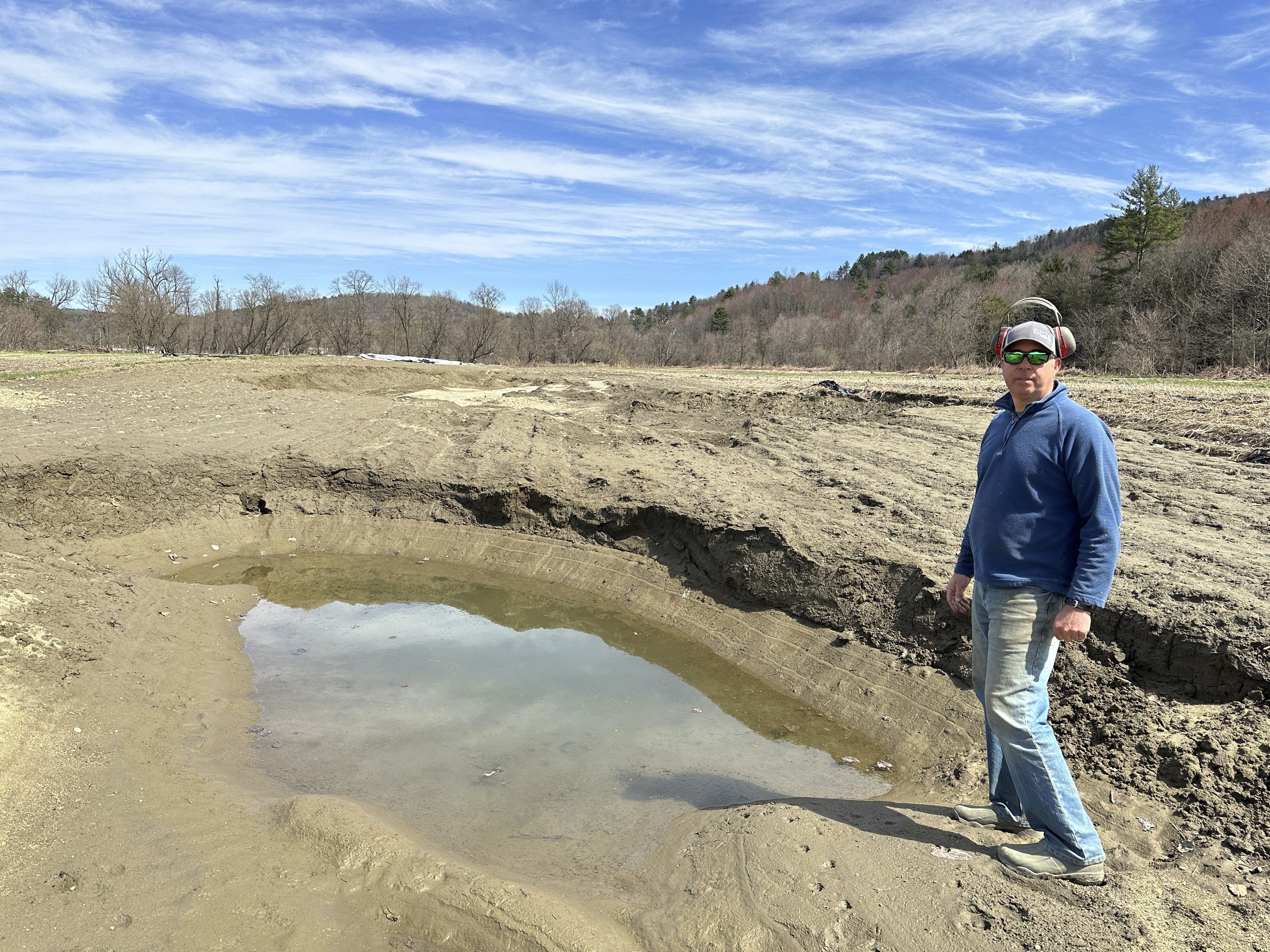This snowy February could help turn around long-term drought conditions, which are affecting much of New England.
“They’re little bitty flakes, but they add up over time,” National Weather Service hydrologist Greg Hanson said on the impact melting snow can have in reversing drought.
Hanson has been taking samples of the snowpack in Vermont, not to assess its depth, but rather, its water content.
“There’s six tenths of an inch of liquid water in that snow,” Hanson said, pointing to a scale on which he placed a tube containing a six-inch plug of snow taken from the ground in South Burlington.
Last summer and fall, we all remember reservoirs turning to deserts, drinking water wells drying up, and farmers suffering with parched fields as moderate and severe drought gripped most of the northeast.
“St. Anthony is the patron saint of lost things, so I’m praying to find lost rain,” farmer Mike Smolak of Smolak Farms in North Andover, Massachusetts said last August.
Fast forward to today, and Hanson said the lingering precipitation deficit is starting to turn around, thanks in large part to snow. That deficit dates back to a snow shortage last winter.
Vermont
The latest news from around the state
“It takes a long time to get into a drought, and a long time to get back out, as well,” Hanson said.
All the snow in the valleys and the mountains will eventually melt, but Hanson says if it happens too quickly, or if the soil is too frozen to accept it, much of the runoff could just flow through rivers instead of soaking into the earth and replenishing the groundwater, where it really makes a difference.
“The longer it takes for the snow to melt, the better the ground recharge is,” Hanson noted.
While the snow is helping, the National Weather Service says what it’ll really take to turn around the long-term drought is regular, steady rain through the spring and summer.



